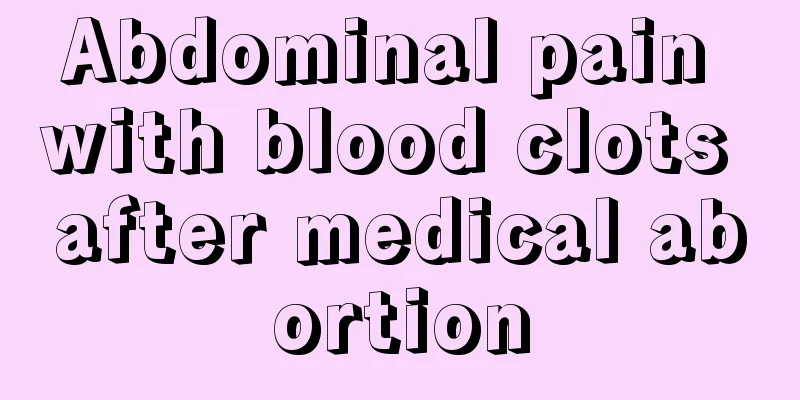Nipples of women who have given birth

|
Many women who have been pregnant and given birth know that scars sometimes form on the nipples when giving birth. The scabs will prevent the baby from getting breast milk, and newborn babies rely on breast milk to supplement their nutrients. Therefore, this situation causes many new mothers to worry. So what should women who have given birth do if their nipples have scars? 1. What to do if nipple scars occur after childbirth Lumps due to milk stasis should be considered. The causes of milk stasis include: incomplete nipple development (too small or sunken) hindering breastfeeding, too much milk or the baby sucking less milk, resulting in the milk not being completely discharged; blocked milk ducts affecting milk discharge. You can use boiling water to warm the area, do some local massage, and after feeding your baby, you can use a manual breast pump to help suck the nipple as much as possible. If the lump does not disappear, or if fever, unbearable pain, etc. occur, you need to go to the hospital for treatment and receive timely treatment under the guidance of a doctor to prevent mastitis. 2. What is the reason for hair loss after giving birth? 1. Changes in growth hormone The speed at which women's hair grows is closely related to the level of estrogen in the body. When estrogen levels increase, the rate of hair loss slows down; when estrogen levels decrease, the rate of hair loss accelerates. The reproductive organs are in the repair stage within 6 months after giving birth, and the metabolism of female hormones is significantly reduced, causing hair loss. 2. Spiritual elements For example, some women are irritable or mentally stressed for various reasons before and after childbirth, which leads to metabolic disorders and insufficient nutrient supply, causing hair loss. After a woman becomes pregnant, especially for the first time, she will have a lot of mental pressure. After giving birth, she will go from an excited state to fatigue, and her mood will go from high to relatively depressed. Some pregnant women will experience emotional indifference, anxiety, imbalance in cerebral cortex function, autonomic nervous system dysfunction, and imbalance in nerves that control hair blood vessels, resulting in malnutrition and hair loss. 3. Dietary elements During the postpartum breastfeeding period, if the digestion and absorption function of pregnant women is poor, or the diet is too simple and picky, or some pregnant women go on a diet to maintain a graceful figure after giving birth, it is easy to have nutritional deficiencies or nutritional imbalances, resulting in insufficient supply of protein, vitamins, or minerals in the body, which in turn affects the growth and metabolism of hair and makes the hair dry and easy to break. After reading the detailed introduction above, I think everyone has an understanding of what to do about nipple scars after childbirth. Although it is painful to remove the scars on the nipples, mothers still have to endure it for the sake of their babies to have milk. After all, they have endured the pain of childbirth, so is there anything they cannot do for their babies? |
<<: Six months pregnant belly picture
>>: What to do if stretch marks itch after childbirth
Recommend
How long does it take for urine test to turn negative after miscarriage?
Important reminder: Under normal circumstances, t...
What part of the sheep is used for stir-fried mutton with green onions? What part of the sheep is used for stir-fried mutton with green onions?
We all know that mutton is a common meat food. Th...
The reason why vaginal discharge is black
It is said that God created Adam, and then took o...
How long should I rest after a miscarriage in four months of pregnancy?
Miscarriage at four months of pregnancy is a very...
What kind of exercise is suitable for pregnancy preparation?
When preparing for pregnancy, most people think t...
Gout, why does it prefer to torture men?
You must have heard of "gout" at some p...
What are the symptoms of anemia during pregnancy?
During pregnancy, expectant mothers must consume ...
Why do I fart a lot during early pregnancy?
Pregnant women become the focus of family protect...
Brown sticky discharge at 8 weeks pregnant
The eighth week of pregnancy is still in the earl...
What to do if your breasts are sagging? Three ways to make your breasts more upright
Sagging breasts will directly affect the breast s...
Can I get pregnant if I have sex four days before ovulation?
There are many contraceptive methods nowadays, ei...
Women's annual physical examination must check items
Nowadays, women pay more and more attention to th...
Is it better to have more or less amniotic fluid?
The fetus in the mother's belly absorbs nutri...
Can I have an IUD if I have uterine prolapse?
Uterine prolapse is a condition in which some mot...
Belly jumps in early pregnancy
Pregnant mothers will judge the baby's health...









